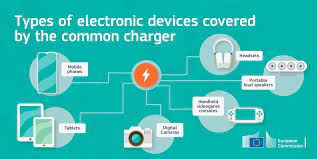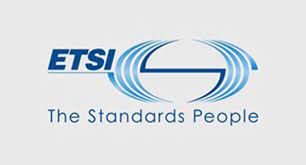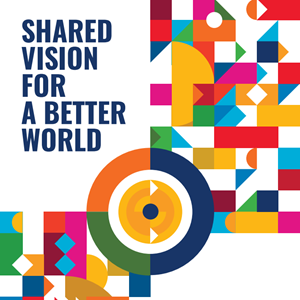Main News

European Commission Proposes a Common Charger for Electronic Devices
The Commission takes an important step against e-waste and consumer inconvenience, caused by the prevalence of different, incompatible chargers for electronic devices. Years of working with industry on a voluntary approach already brought down the number of mobile phone chargers from 30 to 3 within the last decade but could not deliver a complete solution. The Commission is now putting forward legislation to establish a common charging solution for all relevant devices.
With proposal for a revised Radio Equipment Directive, the charging port and fast charging technology will be harmonised: USB-C will become the standard port for all smartphones, tablets, cameras, headphones, portable speakers, and handheld videogame consoles. In addition, the Commission proposes to unbundle the sale of chargers from the sale of electronic devices. This will improve consumers' convenience and reduce the environmental footprint associated with the production and disposal of chargers, thereby supporting the green and digital transitions.

New EN 17507 to help Improve Measuring the Emissions of Road Vehicles
Improving the way to measure particulate emissions of road vehicles, and thus contributing to reducing transport pollution? This is now possible, thanks to recently published standard EN 17507 ‘Road vehicles - Portable Emission Measuring Systems (PEMS) - Performance assessment’.
This standard, developed by 'CEN/TC 301 - Road vehicles', aims to qualify the measurement uncertainties of portable particle emission measurement systems (PEMS) used in real driving tests. The qualification of the different components of PEMS is of particular importance in the context of the tightening of particulate emissions thresholds. EU legislation foresees the definition of tolerated emission thresholds by taking measurements of an uncertainty factor, based on the objective precision of the portable measuring means. Thanks to the new standard, this precision is now set to improve and the uncertainty factor to be reduced. The new EN 17507 provides the elements to assess this progression. With this new standard, CEN – the European Committee for European Standardization - brings a new contribution of European standardization to the efforts to address transport pollution, a major challenge in the context of the EU Green Deal.

ETSI Launches First Specification for the F5G Technology Landscape
ETSI's 5th Generation Fixed Network group (F5G ISG) has just released its first specification, ETSI GS F5G 003, entitled F5G Technology Landscape. In this specification, the ISG studies the technical requirements, existing standards and gaps for 10 different new use cases, for home, enterprises or industrial needs.
ETSI GS F5G 003 use cases include PON (passive optical network) on-premises and passive optical LAN. In this case, a PON system could connect end devices (like HDTV, HD surveillance cameras and VR/AR helmets) and provide higher data rate, better coordination, and controlled latency than current Ethernet and Wi-Fi mesh.
The high-quality private line use case focuses on optical transport networks (OTN) for governments, large companies, financial and medical institutions who need guaranteed bandwidth, low latency, five-nines availability, totally secured network, access to Cloud services and intelligent operation and maintenance of their connectivity. PON enables high quality but low-cost private lines for SMEs and offers higher performance, lower cost, better industrial adaptation, and easier operation for the industrial customers as well.

DIN, DKE & VDI developing the German Standardization Roadmap for Circular Economy
Together with the German Federal Ministry for the Environment, Nature Conservation and Nuclear Safety (BMU), the German Institute for Standardization (DIN) and the German Commission for Electrical, Electronic & Information Technologies (DKE) of DIN and VDE and the Association of German Engineers (VDI) have announced the launch of the German Standardization Roadmap Circular Economy. The aim of the Standardization Roadmap is to provide an overview of the status quo of standardization in the field of Circular Economy, describe the requirements and challenges for seven key topics, and identify possible concrete needs for action for future standards and specifications.
-
Essential support for climate targets: The Circular Economy is of particular importance in achieving the goals of the Green Deal and the Climate Change Act 2021. To achieve the ambitious climate protection targets, new and revised technical rules for the Circular Economy are now needed. The Standardization Roadmap Circular Economy will set the path for this, thus driving forward the green transformation of Germany and Europe.
-
Seven key topics set: The Roadmap will focus on the following key topics: Electrotechnology and ICT, batteries, packaging, plastics, textiles, construction & municipalities, and digitalization/business models/management. These are based on the key topics of the EU's Circular Economy Action Plan. With a German Standardization Roadmap for Circular Economy, specific national standardisation needs will be identified with the aim of feeding them into the European and international standardisation bodies.





